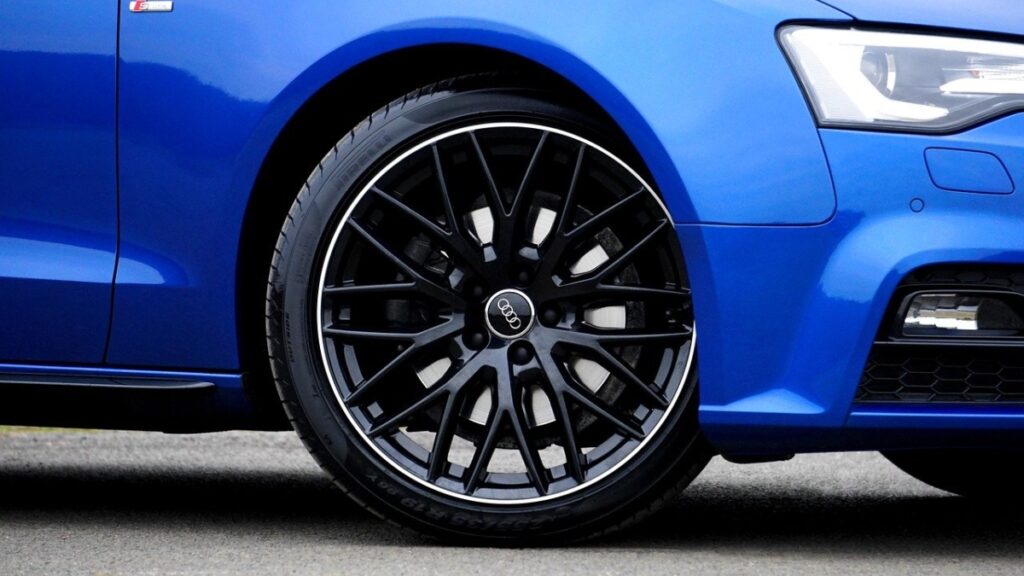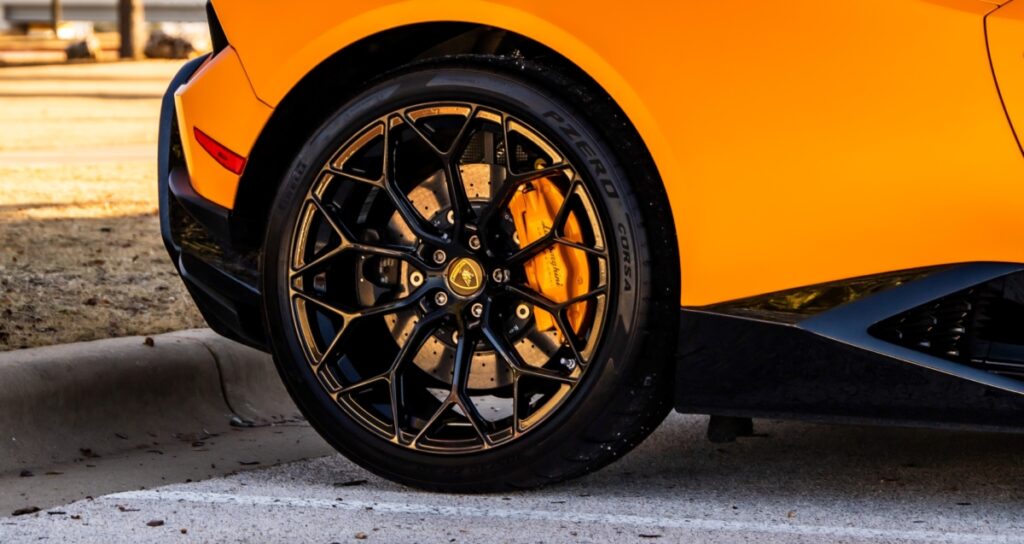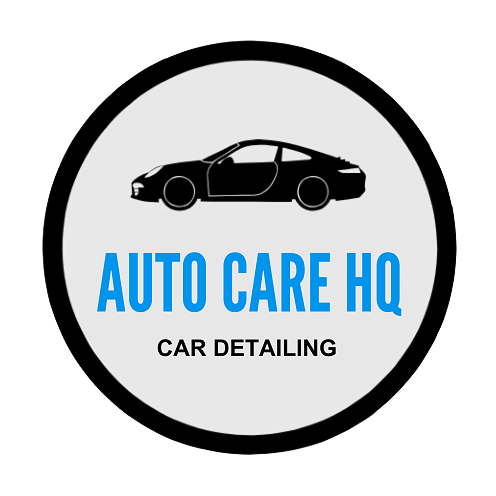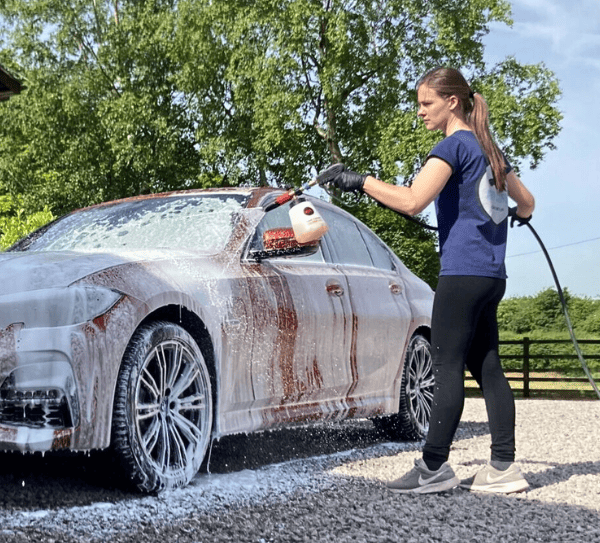Diamond cut wheels look great, but they don’t come without problems. If your wheels are currently diamond cut and you’re looking for a change, then here are 3 great alternative alloy wheel finishes and their pros and cons so you can decide which is the best option for your car.
Alternatives to Diamond Cut Alloy Wheels
- Powder Coated Finishes
- Painted Finishes
- Anodised Finishes
The Issues with Diamond Cut Wheels
Diamond cut wheels are used on the top trim level of many cars due to their striking appearance, however there are several issues with this kind of finish. The main problem being that they are not very durable because they are so susceptible to corrosion.
If the lacquer becomes damaged in any way, for example by a small stone chip that may not even be very noticeable, then water will go underneath the finish and give it a milky white appearance. This is commonly known as “white worm” and ruins the finish of the rim.
Even if you protect your wheels by ceramic coating them, this is still likely to happen and most diamond cut wheels need refurbishing every couple of years on a daily driver. This causes 2 more problems.
- Since diamond cut wheels are susceptible to corrosion, most manufacturers offer a shorter warranty on them. Typically they come with a 1 year warranty whereas most other finishes come with a 2 year warranty.
- There is a limit to how many times a diamond cut wheel can be refurbished to ensure the structural integrity of the wheel isn’t compromised.
Hence, many owners who have had these problems with diamond cut wheels are keen to find an alternative which still gives their alloys a premium look, but without these durability issues.
Powder Coated Wheels
Powder coating gives the alloy a very durable finish which can last for over a decade without showing signs of corrosion.
You can choose from a huge range of color options with either gloss, satin or matte finishes. Typically powder coated wheels are finished in one color, however you can get two-tone powder coated wheels to get that diamond cut effect. It is possible to get a very glossy finish to make the wheel look diamond cut, however it does not quite match the striking appearance in most cases.
Many car owners who have suffered from durability issues with their diamond cut wheels in the past turn to powder coating as a solution. Here’s how it works:
- The process starts by stripping the finish with acid and then sandblasting them which serves to clean and roughen the wheels so the powder coating can bond to it.
- The powder is applied to the wheels in a spray format so they are evenly coated.
- The wheels are them baked so the powder sets.
- The wheels are clear coated to protect the finish and a gloss-look if desired and baked a second time.
In terms of price, powder coating is typically a slightly cheaper refurb option compared to diamond cutting. In the USA, you’re looking at about $75 less per wheel, and £50 less in the UK.
| Advantages | Disadvantages |
| Very durable finish which lasts for many years before corrosion | Harder and more expensive to get a two-tone finish |
| Slightly cheaper than diamond cut finishes | Typically not quite as striking as diamond cut wheels |
| Large range of colors available in gloss, matte and satin finishes | May result in a slightly textured finish if the process is not performed correctly |

Painted Wheels
Painted wheel finishes are a great alternative to diamond cutting because they are more durable but also allow you to achieve the same look.
The alloys can be painted to achieve the two-tone effect that makes diamond cut wheels so popular but without the corrosion issues. Typically, the wheels will be painted in a single color during refurbishment, so achieving the two-tone effect requires more time, and hence results in a higher cost as it’s more bespoke.
Painted finishes are not as durable as powder coated finishes, but they do result in a closer match to the “diamond cut” look. They are also less likely to have a textured finish than powder coated rims.
Although not as susceptible to corrosion as diamond cut finishes, painted wheels still be taken care of properly to ensure the finish does not deteriorate.
This includes regular cleaning to ensure that the brake dust does not build up and bake on making it difficult to remove without aggressive chemicals which can cause staining. It is recommended that the wheels are ceramic coated to make them easier to clean and less likely to fade over time.
| Advantages | Disadvantages |
| Huge variety of colors and finish options | Less durable than powder coated finishes |
| The finish is uniform and less likely to be textured compared to powder coating | Time-consuming and fairly expensive to achieve the two-tone finish |
| Achieves a very close match to the diamond cut look | Requires regular cleaning and care to make sure the finish does not fade |

Anodised Wheels
Finally, you can get your wheels anodised which is a very different process to powder coating and painting.
Anodising is an electrochemical process that transforms the metal into an anodic oxide finish which is essentially a layer of aluminium oxide. This increases the thickness of the metal slightly and means that unlike powder coating and painting, the finish is not layered on top, but is part of the wheel. This is a very difficult technique to perform so is less commonly seen compared to powder coated and painted finishes.
The main advantage is that anodised wheels do not peel or flake off because they are part of the wheel rather than layered on top. They are also very durable and corrosion-resistant. You can also achieve a very high-gloss two-tone finish using this process as with painted and diamond cut finishes.
However, this process can be very expensive and it’s much harder to find specialists who perform it. Additionally, it can only be done on aluminium alloy wheels and the aluminium needs to be a specific grade so it may not be suitable for some wheels.
| Advantages | Disadvantages |
| Anodised wheels will not flake or peel | This is a more expensive finish type |
| Leaves a very durable finish | Only suitable for certain alloys (not steel) |
| Can achieve a two-tone finish | Harder to find specialists to perform the process |

Here are some more articles you might find useful:

